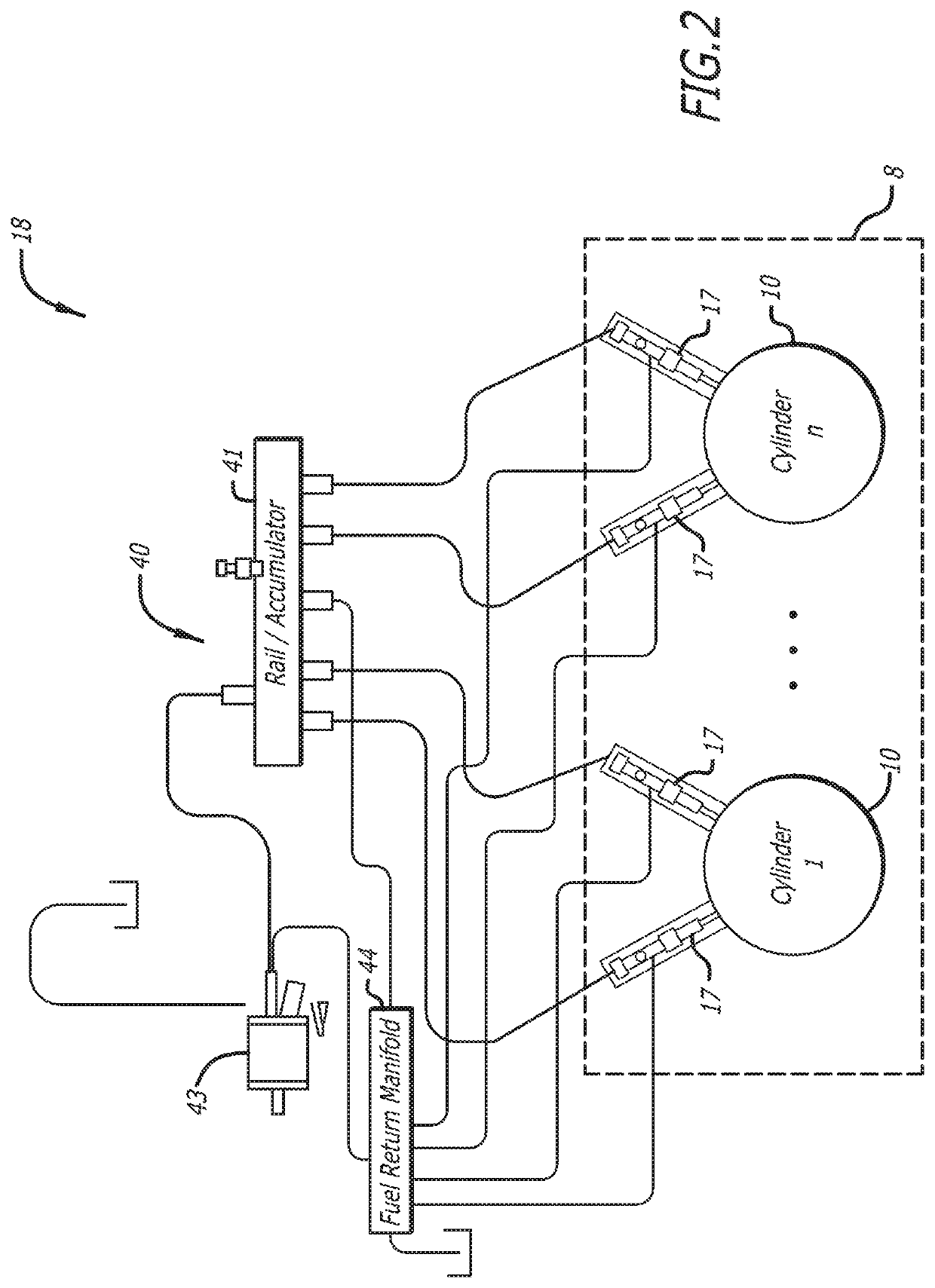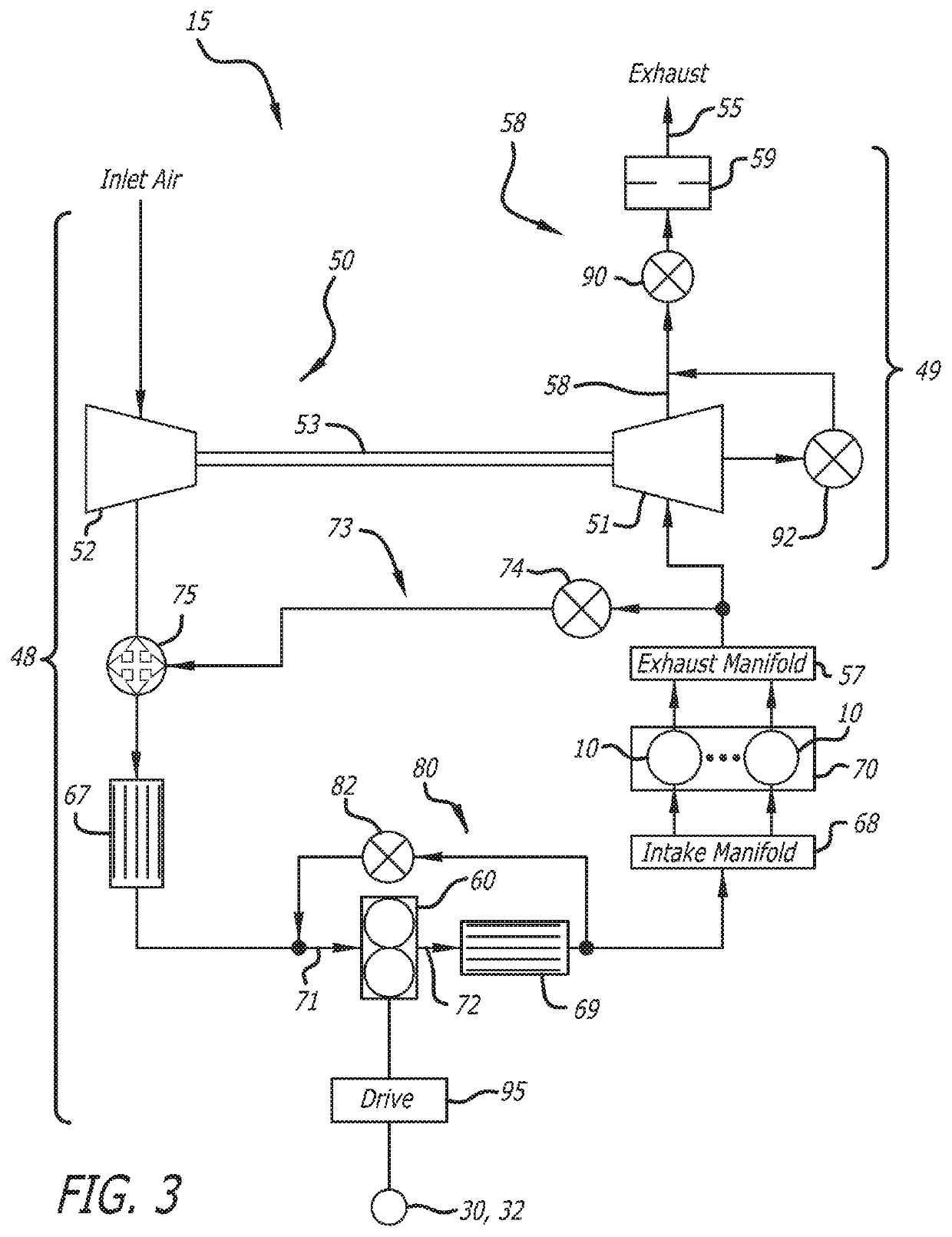Exhaust catalyst light-off in an opposed-piston engine
- Summary
- Abstract
- Description
- Claims
- Application Information
AI Technical Summary
Benefits of technology
Problems solved by technology
Method used
Image
Examples
first embodiment
[0048]A first embodiment of a catalyst light-off method of controlling the opposed-piston engine 8 may be understood with reference to FIGS. 4 and 5. When an engine start signal 112 is input to start the engine (step S1), the ECU 94 generates a Crank signal to activate the starter motor device 110, which commences to crank the opposed-piston engine 8. While cranking continues, the ECU 94 may execute a cold start procedure to quickly initiate and stabilize combustion. At the transition to run mode control, engine operation enters a stable idling state. During this initial period, the ECU 94 reads various sensors to determine engine speed and engine load, and reads the exhaust gas temperature sensor 102 to determine whether a catalyst light-off control mode should be activated. An engine state check can also be executed by the ECU 94 using the engine speed sensor 97 to detect when the engine control transitions out of the crank mode (step S2). When the crank mode is completed, the ECU...
second embodiment
[0053]A second embodiment of a catalyst light-off mode of controlling the opposed-piston engine 8 may be understood with reference to FIGS. 4 and 6. In this embodiment, the ECU 94 may determine, by one or more of estimation, calculation, and table look-up, a value of exhaust enthalpy based on a catalyst temperature value indicative of a temperature of the catalyst in the SCR 105 and an exhaust mass flow rate value indicative of a mass flow rate of exhaust gas in the exhaust passage 49.
[0054]In the second embodiment, a catalyst temperature (TCAT) is determined, calculated, or estimated by the ECU 94 on the basis of a difference between the inlet temperature (TCat-in) of the catalytic device and an outlet temperature (TCat-out) of the catalytic device, and, possibly, other parameters. This embodiment may be implemented by an exhaust gas temperature sensor arrangement including the first exhaust gas temperature sensor 102 to detect TCat-in and a second exhaust temperature sensor 103 lo...
PUM
 Login to View More
Login to View More Abstract
Description
Claims
Application Information
 Login to View More
Login to View More - R&D Engineer
- R&D Manager
- IP Professional
- Industry Leading Data Capabilities
- Powerful AI technology
- Patent DNA Extraction
Browse by: Latest US Patents, China's latest patents, Technical Efficacy Thesaurus, Application Domain, Technology Topic, Popular Technical Reports.
© 2024 PatSnap. All rights reserved.Legal|Privacy policy|Modern Slavery Act Transparency Statement|Sitemap|About US| Contact US: help@patsnap.com










